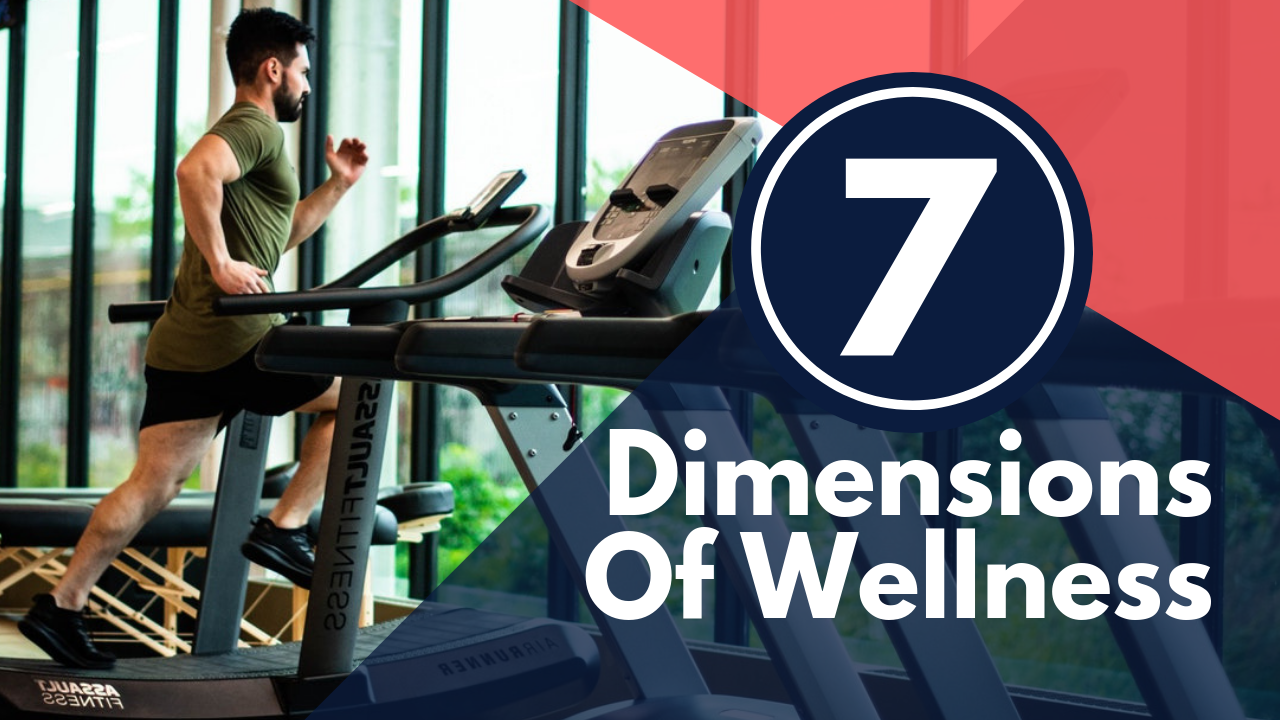- Wellness isn’t just about physical and mental wellbeing. There are 7 dimensions of wellness, which should all be addressed in the workplace.
- These are: social, emotional, spiritual, environmental, occupational, intellectual, and physical wellbeing.
- This article discusses each of the 7 dimensions, what they mean, and how to address them in the workplace.
Though most people associate wellness with physical and mental wellbeing, there are, in fact, 7 dimensions of wellness. Still, most corporate and workplace wellness programs tend to focus mostly on addressing physical and mental health.
It’s a start, but successful wellness programs are those that are robust and holistic and can address each of the seven dimensions of wellness while at work.
7 Dimensions of Wellness and How to Address them in the Workplace
Social Wellness
In simple words, social wellness is the ability to relate and connect with other people, at work, at home, in our neighborhoods, etc. Social wellness is about building and maintaining positive relationships that add value to our and other people’s lives.
Social wellness can be addressed in the workplace by encouraging people to engage with other coworkers and staff members. Social wellness in the workplace can be addressed in the following ways:
- Through design. Designing an attractive community area where people can get together, eat, drink coffee, etc. Having areas in the workplace that are conducive to group activities and interactions.
- Curating a variety of events and activities that will bring people together at specific times like free snacks at certain times of the day, group lunches or potlucks, etc.
Social wellness creates a sense of belonging, it can make people happier and physically healthier as well. At work, this can translate into increased motivation, productivity, and collaboration.
Emotional Wellness
Emotional wellness is also commonly referred to as mental wellness. Emotional wellness is our own ability to understand and accept ourselves and successfully cope and deal with the challenges and obstacles life and work bring. Emotional wellness is being able to identify how you’re feeling and why; it’s about acknowledging and effectively channeling anger, fear, sadness, stress, hope, love, happiness, frustration, etc.
Though there is still significant stigma around conversations of mental or emotional wellness at work, it’s important to create a workplace environment where people feel safe and comfortable sharing how they feel. To address emotional wellness in the workplace, companies should:
- Offer stress management programs/workshops
- Offer mental health days (people sometimes need a day off to deal with their thoughts and emotions)
- Offer onsite meditation programs
- Promote support services available in your community or neighborhood
- Provide mindfulness training
- Send daily or weekly inspiration quotes
Spiritual Wellness
Spiritual wellness goes hand-in-hand with emotional wellness, as spiritual and emotional wellness directly influence one another. Spiritual wellness is our ability to establish peace and harmony in our lives and to be fulfilled by what we do by aligning our values with our actions.
Spiritual wellness is about having a set of guiding beliefs, principles, and values that give meaning, purpose, and direction to our lives. Below are some ways to address and encourage spiritual wellness in the workplace:
- State your company or brand’s purpose in order for people to find meaning and purpose in their work
- Encourage meditation
- Offer on-site yoga classes
- Set up policies that facilitate and foster diversity in culture, ideas, and thought
- Offer quiet rooms where people can relax, sleep, pray, medidate
- Have a company volunteer or giving back program (people oftentimes find meaning and purpose by helping others)
Environmental Wellness
Environmental wellness is being aware of nature, our environment, and our immediate surroundings. It is about protecting the environment and protecting ourselves from environmental hazards. This requires that people think of air, water, and land quality and take the necessary steps to protect it.
Here’s how to address environmental wellness in the workplace:
- Build a healthy workplace, this can be done by offering high-quality filtered water, by providing regular maintenance to air filters and the overall HVAC system, provide access to natural resources in the workplace — views, plants in the office (here are the 7 best low-maintenance plants that are hard to kill), natural light, etc — carefully monitor thermal comfort, and embrace biophilia
Suggested Reading: 14 Patterns of Biophilic Design to Improve Health and Wellbeing in the Workplace”
- Have a recycling program
- Avoid using hazardous materials and go for environmentally friendly options — paint, cleaning supplies, avoid one time use plastic, etc.
- Decrease unwanted noise levels and avoid heavy use of artificial lighting
- Offer bike storage to encourage the use of alternative methods of transportation
Occupational Wellness
Occupational wellness refers to our ability to feel fulfilled with our jobs and chosen career paths, without sacrificing work-life balance; it’s about being involved in work activities that allow you to show your talents and skill set.
Occupational health is also about providing a work environment that is conducive to good health, productivity, presenteeism, and preventing work related diseases. Occupational health is a leading factor of good health, especially considering that people spend over 40 hours of their week in the workplace.
Occupational wellness is about maximizing workplace happiness. Here’s how to address occupation health in the workplace:
- Carry out regular health risk assessments and promote preventive health in the workplace (like vaccines, flu shots, allergies, etc.)
- Have a smoke free policy and encourage people to take regular walking breaks throughout the day
- Provide incentives or rewards for healthy behaviors
- Involve coworkers and staff in leadership decisions
- Since occupational health is about maintaining healthy work-life balance, companies can offer on-site childcare, flexible hours, and family-friendly policies and activities
Suggested Reading: “Inside the World’s First Coworking Space with Full Childcare: a Q&A with Third Door’s Shazia Mustafa”
Intellectual Wellness
Intellectual wellness encompasses creative and stimulating mental activities. It’s about our ability to open our minds to new ideas and experiences that can benefit our personal and professional lives. Intellectually well individuals have a desire to learn and apply new concepts, improve their existing skill sets, and seek new challenges.
Intellectual wellness requires that a person uses and takes advantage of the different resources available to expand his or her knowledge. This dimension of wellness can be developed through academics, professional career, cultural involvement, and hobbies.
Intellectual wellness can be addressed in the workplace in the following ways, and its goal is to encourage life-long learning habits in professionals.
- Build a library of resources: provide access to a wide variety of resources that can help professionals improve their intellectual capability and expand their knowledge (access to research, books, experts, thought-leaders, etc.)
- Professional development classes: offer on-site classes to help people develop new skills (marketing classes, programming classes, finance workshops, etc.)
- Organize and host a book club
- Encourage brainstorming sessions and collaboration opportunities. These activities can help drive creative and innovative thinking. Also, working together with others exposes individuals to new and challenging ideas.
Physical wellness
Physical wellness is about taking proper care of our bodies so that our bodies can function properly and optimally. Physical wellness encompasses various elements, like activity and nutrition. Physical wellness is about being able to complete daily activities without extreme fatigue or physical stress and avoiding destructive habits (sedentary behavior, drugs, alcohol, tobacco).
Physical wellness is one of the most-addressed dimensions of wellness in the workplace. Below are some ideas:
- Encourage walking meetings
- Offer bike storage and shower facilities so people bike to work
- Organize different fitness challenges or groups (walking, hiking, running, biking groups; fitbit challenge, etc.)
- Have quick 5-15 minute physical activity breaks during the workday (pushups at 10:00 a.m., yoga during lunch break, zumba after hours, etc.)
- Encourage the use of stairs
- Offer healthy snacks in the workplace (Check out “The Best Snacks to Improve Cognitive Function in the Workplace”)
- Encourage healthy sleeping habits (if you want to take it a step beyond, you can offer nap pods in the workplace)
If you need more ideas on how to implement a holistic workplace wellness programs, here are some additional ideas.


 Dr. Gleb Tsipursky – The Office Whisperer
Dr. Gleb Tsipursky – The Office Whisperer Nirit Cohen – WorkFutures
Nirit Cohen – WorkFutures Angela Howard – Culture Expert
Angela Howard – Culture Expert Drew Jones – Design & Innovation
Drew Jones – Design & Innovation Jonathan Price – CRE & Flex Expert
Jonathan Price – CRE & Flex Expert














